- Home
- Quizzes
- My Quiz Activity
- Newsletters
- Sports Betting
- MY FAVORITES
- Add Sports/Teams
- SPORTS
-
NFL
- NFL Home
- Arizona Cardinals
- Atlanta Falcons
- Baltimore Ravens
- Buffalo Bills
- Carolina Panthers
- Chicago Bears
- Cincinnati Bengals
- Cleveland Browns
- Dallas Cowboys
- Denver Broncos
- Detroit Lions
- Green Bay Packers
- Houston Texans
- Indianapolis Colts
- Jacksonville Jaguars
- Kansas City Chiefs
- Las Vegas Raiders
- Los Angeles Chargers
- Los Angeles Rams
- Miami Dolphins
- Minnesota Vikings
- New England Patriots
- New Orleans Saints
- New York Jets
- New York Giants
- Philadelphia Eagles
- Pittsburgh Steelers
- San Francisco 49ers
- Seattle Seahawks
- Tampa Bay Buccaneers
- Tennessee Titans
- Washington Commanders
-
MLB
- MLB Home
- Arizona Diamondbacks
- Atlanta Braves
- Baltimore Orioles
- Boston Red Sox
- Chicago White Sox
- Chicago Cubs
- Cincinnati Reds
- Cleveland Guardians
- Colorado Rockies
- Detroit Tigers
- Houston Astros
- Kansas City Royals
- Los Angeles Angels
- Los Angeles Dodgers
- Miami Marlins
- Milwaukee Brewers
- Minnesota Twins
- New York Yankees
- New York Mets
- Oakland Athletics
- Philadelphia Phillies
- Pittsburgh Pirates
- San Diego Padres
- San Francisco Giants
- Seattle Mariners
- St. Louis Cardinals
- Tampa Bay Rays
- Texas Rangers
- Toronto Blue Jays
- Washington Nationals
-
NBA
- NBA Home
- Atlanta Hawks
- Boston Celtics
- Brooklyn Nets
- Charlotte Hornets
- Chicago Bulls
- Cleveland Cavaliers
- Dallas Mavericks
- Denver Nuggets
- Detroit Pistons
- Golden State Warriors
- Houston Rockets
- Indiana Pacers
- Los Angeles Clippers
- Los Angeles Lakers
- Memphis Grizzlies
- Miami Heat
- Milwaukee Bucks
- Minnesota Timberwolves
- New Orleans Pelicans
- New York Knicks
- Oklahoma City Thunder
- Orlando Magic
- Philadelphia 76ers
- Phoenix Suns
- Portland Trail Blazers
- Sacramento Kings
- San Antonio Spurs
- Toronto Raptors
- Utah Jazz
- Washington Wizards
-
NHL
- NHL Home
- Anaheim Ducks
- Arizona Coyotes
- Boston Bruins
- Buffalo Sabres
- Calgary Flames
- Carolina Hurricanes
- Chicago Blackhawks
- Colorado Avalanche
- Columbus Blue Jackets
- Dallas Stars
- Detroit Red Wings
- Edmonton Oilers
- Florida Panthers
- Los Angeles Kings
- Minnesota Wild
- Montreal Canadiens
- Nashville Predators
- New Jersey Devils
- New York Islanders
- New York Rangers
- Ottawa Senators
- Philadelphia Flyers
- Pittsburgh Penguins
- San Jose Sharks
- Seattle Kraken
- St. Louis Blues
- Tampa Bay Lightning
- Toronto Maple Leafs
- Vancouver Canucks
- Vegas Golden Knights
- Washington Capitals
- Winnipeg Jets
- NCAAF
- NCAAM
- Boxing
- Entertainment
- Lifestyle
- Golf
- MMA
- Soccer
- Tennis
- Wrestling
- More Sports
- RESOURCES
- My Account
- YB on Facebook
- YB on Twitter
- YB on Flipboard
- Contact Us
- Privacy Policy
- Terms of Service

Riot on the set: 25 unbelievable yet true stories from the sets of movies
Making movies is a community effort. It starts with a screenplay, which gets bought by a producer or a studio, at which point a director gets attached and then, with any luck, you get the greenlight and you're off to the races. And then...anything can happen. Given the sour temperament of a director or a star, or the volatile climate of your location or the dubious means of a financier, you could find yourself in a dire situation. Films both great and horrible have faced production turmoil. Here are 25 movies that tested and, in some cases, conquered the resolve of their filmmakers.
"Apocalypse Now"

If you’ve seen the harrowing documentary “Hearts of Darkness: A Filmmaker’s Apocalypse,” you know the score. Francis Ford Coppola’s Vietnam-set variation on Joseph Conrad’s novella sailed way overbudget and overschedule, as a series of calamities hammered the production: Shooting was halted when a typhoon destroyed the sets; the film’s stress-ridden star, Martin Sheen, suffered a near-fatal heart attack; Marlon Brando showed up to the set massively overweight and thoroughly unprepared. Was it worth it? “Apocalypse Now” was a box office success and is acclaimed today as one of the greatest films ever made, so to cinephiles the world over, the answer is a resounding “yes." Those who endured the year-plus production might provide a different answer.
"Winter Kills"
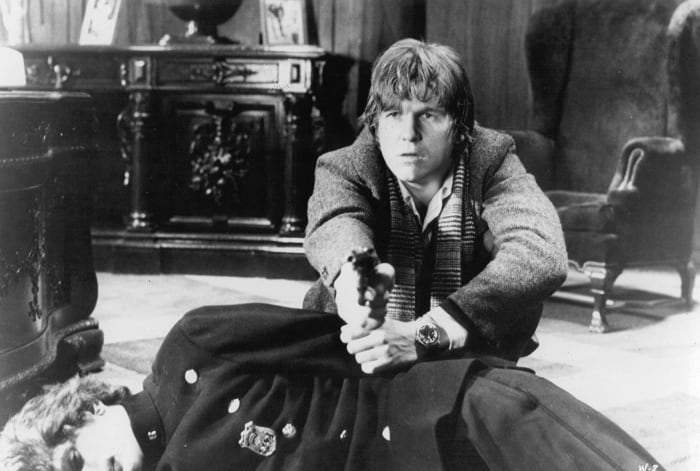
William Richert’s star-studded adaptation of Richard Condon’s paranoid satire was a risky proposition based on the off-kilter material alone. That it was initially produced by a pair of softcore porn peddlers, Robert Sterling and Leonard Goldberg, who secured a chunk of their financing via the mafia, made it a deadly undertaking. During the production, Goldberg was chained to his hotel bed and shot in the head — presumably by the mafia for racking up a mountain of debt; Sterling, meanwhile, would later snag a 40-year jail sentence for marijuana trafficking. The set was also shut down three times for failure to pay the crew on time. In retrospect, it’s a fascinating misfire with fine performances from John Huston, Jeff Bridges and Anthony Perkins (and a cameo from Elizabeth Taylor!), but you can sense the behind-the-scenes turmoil on the screen.
"Three Kings"

Behind-the-scenes tensions on this brilliant Gulf War adventure comedy started in preproduction, when director David O. Russell resolved to rid George Clooney of the TV-actor tics he’d developed on “ER." As he put Clooney through meditation and breathing exercises, the actor grew anxious over the lack of a completed script with which he could prepare for his role. By the time they got on set, Clooney had tired of O. Russell’s hectic creative process, which was compounded by his abusive treatment of the crew. When the frustrated director allegedly threw an extra to the ground, Clooney confronted him. A fight between the leading man and his director ensued. Only egos were bruised, but the conflict leaked to the media, giving the film a “troubled” reputation prior to release. Though O. Russell and Clooney eventually reconciled, it’s unlikely the two will ever work together again.
"Rebecca"

What happens when you bring two notorious control freaks together to make a movie? In the case of “Rebecca”, you wind up with a masterpiece, but not without a tussle. Producer David O. Selznick and director Alfred Hitchcock battled over authorship throughout the production, with the latter shooting zero coverage so as to hamper the former’s meddlesome tendencies. It didn’t work. Selznick shelved the film for a year so he could reshoot and recut the film to his finicky specifications (though supervising editor ultimately tired of Selznick’s tinkering, telling him, “This is it; you cannot have that film anymore. Out it goes.”) Laurence Olivier was unhappy with the casting of Joan Fontaine over his preferred costar, Vivien Leigh, so he treated her poorly throughout the shoot. When Fontaine turned to Hitchcock for reassurance, he reassured her that everyone disliked her (in order to get the desired distraught quality from her performance).
"Arrive Alive"
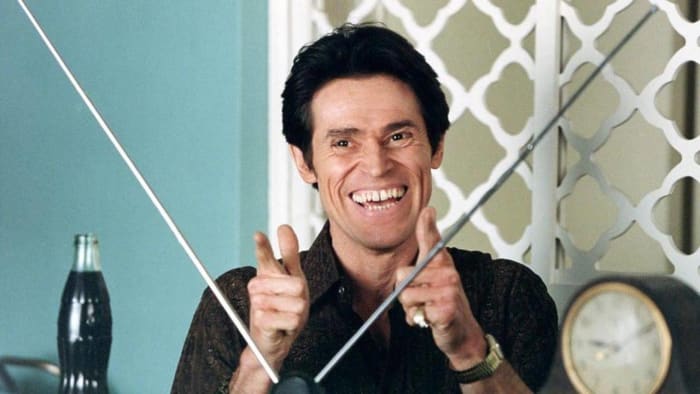
No one remembers this darkly comedic detective thriller starring Willem Dafoe and Joan Cusack from the early 1990s because it was shut down two weeks into shooting and never finished. Written by Mitch Glazer and the late, great National Lampoon/SNL writer Michael O'Donoghue, the Miami-set noir was intended for Bill Murray, but the star found the material far too violent for his taste. (The script opens with the Miami Seaquarium’s killer whale biting off the head of her handler.) By the time director Jeremiah S. Chechik was on board, the production had moved on to Dafoe, a favorite of the studio (Paramount), but not necessarily known at the time for his comedic chops. As elaborate sets were being built, the studio soured on the dailies, forcing it to pull the plug on a script that is every bit as hilarious and relevant as it was 30 years ago.
"The Crow"

The accidental shooting death of Brandon Lee on the set of Alex Proyas’ “The Crow” brought an unimaginably tragic end to a shoot that had been plagued by accidents and bizarre occurrences: a storm destroyed part of the set; a crew member stabbed a screwdriver through his hand; a disgruntled set sculptor drove his car through the sculpture studio; a crane careened into live power lines. Every production has a mishap or two, but the hits — big and small — kept coming until the film’s leading man was felled by a gun with an altered dummy bullet left in the chamber of a .44 Magnum. It’s impossible to watch the film, a box office success, without considering the failure of its production.
"Titanic"

When James Cameron makes a film set on or underwater, get ready for choppy waters. The film was already expected to be one of the most expensive ever made, though, much to the consternation of 20th Century Fox, the budget soared as the production ran way overschedule. Eventually Fox, seeking to hedge its bets on a film that was anything but a guaranteed box office smash (it was about the sinking of a boat, for cryin’ out loud), sold the domestic distribution rights to Paramount. Meanwhile, things were about as chaotic as they could get on set. Cameron’s tyrannical directing style struck fear in the hearts of cast and crew (particularly Kate Winslet, who feared drowning as Ed Harris had nearly done on Cameron’s “The Abyss”). The 160-day shoot was grueling. Finally, a fed-up crewmember spiked the set soup with PCP, causing over 50 people, including Cameron, to experience intense hallucinations. Despite all of this, “Titanic”, unlike its maritime namesake, pulled into harbor an emphatic success.
"Fitzcarraldo"

Hauling a steamship over a hill is an apt metaphor for making a film. Making a film explicitly about hauling a steamship over a hill — and hiring a crew to actually do it sans special effects — is an act of sheer madness. Based on the real life exploits of a 19th century Peruvian baron, Werner Herzog’s “Fitzcarraldo” remains one of the most arduous productions in film history. The film’s original star, Jason Robards, had to drop out of the film nearly halfway through the shoot when he contracted dysentery, and Mick Jagger stepped in as the lead but eventually exited due to shooting delays. Enter Klaus Kinski, whose foul temperament on the set compelled one of the native Agurana extras to ask Herzog if he’d like him to kill the actor. Several natives died during the shoot. One cut off his foot with a chainsaw after being bitten by a venomous snake. Much of this is featured in the Les Blank’s excellent making-of documentary, “Burden of Dreams."
"Jaws"

Steven Spielberg’s remarkable career was nearly nipped in the bud on the grueling shoot of “Jaws." The trouble started with the wunderkind director’s decision to shoot the film on the Atlantic Ocean off Martha’s Vineyard. This caused multiple delays and one boat capsizing that left two of the mechanical sharks on the ocean floor. (They were retrieved at great cost to the production.) The sharks also had a habit of not working when it was time to shoot. And then there was Robert Shaw, a dedicated drinker who blew a day of filming because he was too drunk to nail his legendary USS Indianapolis speech. (He got it right the following day.) As the movie’s budget ballooned and the production’s 59-day schedule hit triple digits, the studio viewed Spielberg’s relative inexperience as the culprit. He thought he was finished. Then the shark started working, and a year later, “Jaws” essentially invented the summer blockbuster.
"Heaven's Gate"
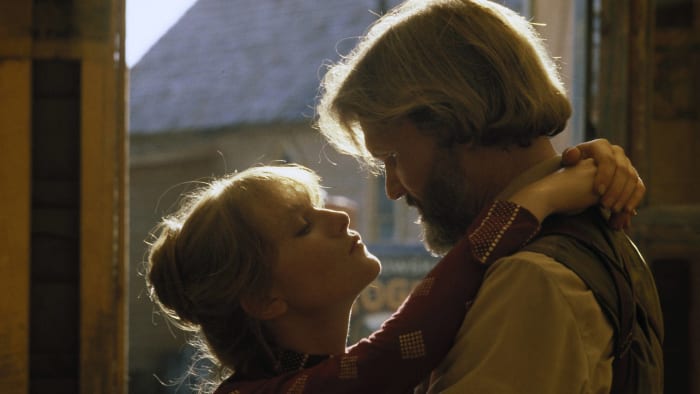
When your $12 million production budget nearly quadruples, you’ve got yourself a troubled set. Michael Cimino shot over a million feet of film attempting to recreate 1890s Wyoming in precise detail. United Artists was so alarmed by his maniacal perfectionism — best exemplified by the director demanding that a finished set be broken down and rebuilt because the streets needed to be 6 feet wider — that they considered replacing him with Norman Jewison or David Lean. Cimino put actors through a rigorous series of takes, delayed a single shot so he could capture an visually impressive cloud and went so far over schedule that John Hurt had enough time to make “The Elephant Man” in the interim. The theatrical cut of the film received generally negative reviews and tanked so hard at the box office that UA was forced to merge with MGM. But when Jerry Harvey’s Z Channel began airing Cimino’s director’s cut in the early 1980s, the movie’s critical reputation was rescued.
"Cleopatra"

This extravagant retelling of the life of Cleopatra went so far overbudget that it nearly put 20th Century Fox out of business despite it being the top grossing film of 1963. Elizabeth Taylor received an unprecedented $1 million to star, but she fell early in the shoot, which led to a disastrously unproductive 16 weeks of shooting under director Rouben Mamoulian. A game of musical chairs ensued that found Joseph L. Mankiewicz replacing Mamoulian, and the duo of Richard Burton and Rex Harrison stepping in for Stephen Boyd and Peter Finch, respectively. Taylor and Burton wound up embroiled in possibly the most infamous on-set affair in film history, which provided endless tabloid fodder. The entire opening battle sequence had to be reshot. Mankiewicz delivered a six-hour cut that was trimmed to three hours for theatrical release. To keep itself afloat, Fox sold off a huge chunk of its backlot Alcoa, which transformed the land into Century City.
"Bonfire of the Vanities"
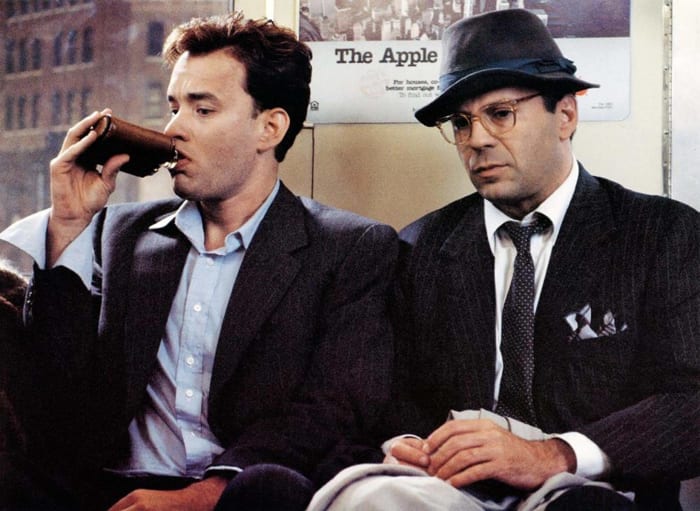
A film undone in preproduction. Brian De Palma began his career making low-budget counterculture satires like “Greetings” and “Hi, Mom!," so there was some hope that he’d be the perfect director to tackle Tom Wolfe’s Dickens-with-teeth document of 1980s Manhattan. Alas, not with this cast. A still boyish Tom Hanks was all wrong as the arrogant “master of the universe” bond trader Sherman McCoy, Bruce Willis flailed in the role of a washed-up tabloid reporter (who was supposed to be British and played by John Cleese), and Melanie Griffith’s Southern belle take on Maria Ruskin clashed with the character’s Russian mistress roots. Michael Cristofer’s screenplay soft-pedaled the novel’s sardonic tone, concluding with an uplifting lecture from Morgan Freeman (in a role originally intended for all-time curmudgeon Walter Matthau).
"Ishtar"

The film that became industry shorthand for studio disasters is far better than its reputation suggests, but its production was something of a throwback to the New Hollywood way of shooting. Star and producer (and perfectionist) Warren Beatty threw his full weight behind director Elaine May (also a perfectionist), which gave her freedom to shoot a Hope and Crosby road picture in her inimitable improvisatory style. May clashed with legendary cinematographer (and perfectionist) Vittorio Storaro, who’d never shot a kooky comedy before. May’s whims, while often brilliant, forced delays (e.g. the flattening of a dune when, after scouting dunes, she decided she wanted a flat landscape). And her penchant for shooting loads of film to capture unexpected moments led to an instance where she continued to roll cameras after her stars had gone to their trailers. (“What if they come back,” she allegedly said.) Beatty was pressured to fire May, but, admirably, never acquiesced. Was “Ishtar” unnecessarily expensive? Yes. Is it also wonderful? Absolutely.
"Alien 3"

“On Earth, everyone can hear you scream.” So proclaimed the nifty 1991 teaser trailer for “Alien 3," which hyped a spectacular version of the movie that the studio would not make. This was par for the course with the third “Alien” movie. Directors like Renny Harlin and Vincent Ward (who wanted to set the movie on a wooden planet inhabited by monks) came and went. Finally, first-time filmmaker David Fincher took the reins, but with heavy-handed producers breathing down his neck to hit a Memorial Day 1992 release date and a script that was constantly in flux, he buckled under the pressure. The “Assembly Cut” version of the film gives you a clear sense of what Fincher was after, while the Blu-ray making-of documentary by Charles de Lauzirika is a warts-and-all must-watch about what happens when you try to make a release date rather than a movie.
"Eyes Wide Shut"

Only Stanley Kubrick could take two of the biggest movie stars in the world, Tom Cruise and Nicole Kidman, off the market for two-plus years to make an erotic thriller about a man’s near infidelity. The travel averse Kubrick recreated Greenwich Village to a precise degree on a Pinewood Studios soundstage at not insignificant cost. Due to his typically glacial shooting pace, he lost Jennifer Jason Leigh and Harvey Keitel (recasting them with Sydney Pollack and Marie Richardson) and reportedly subjected Cruise and Kidman to an ungodly number of takes as a means of flattening out their performances. Though Kubrick died before its release, he got the film he wanted.
"The Island of Dr. Moreau"

New Line had high hopes for its big-budget adaptation of H.G. Wells’ novel, but it couldn’t have brought together a more contentious bunch of artists to see it through. Director Richard Stanley was a full-fledged maverick making his first major studio movie, and he proved totally unreceptive to the studio’s notes once production began. Star Val Kilmer turned into a holy terror when he was served divorce papers on the set, berating everyone within earshot, which drove co-star Rob Morrow to flee the production. And then there was Marlon Brando. Cast in the title role, the notoriously difficult actor refused to learn his lines (asking them to be relayed via earpiece), and clashed with Kilmer; at one point, the two stars delayed a day of work by refusing to exit their trailers until the other reported to set. Stanley was eventually fired, but, worried about his erratic nature, New Line had to hire extra security to make sure he didn’t sabotage the set. (The mischief maker managed to infiltrate the production in full makeup as a dog-man, but did nothing to harm the shoot.) The film was unsalvageable, and it tanked at the box office.
"Margaret"

A brilliant script from a critically acclaimed playwright and filmmaker, a powerhouse cast comprised of Matt Damon, Matthew Broderick, Mark Ruffalo, Anna Paquin, J. Smith-Cameron and Jeannie Berlin and a group of Oscar-winning producers, including Scott Rudin, Sydney Pollack and Anthony Minghella. Why did this film, shot in 2005, not hit theaters until 2011? Financier Gary Gilbert found writer-director Kenneth Lonergan’s edits of the ambitious drama “incoherent” (even those overseen by Martin Scorsese and Thelma Schoonmaker) and thus tied the film up in legal limbo until he could recoup millions of dollars in damages for Lonergan basically making the movie he’d written. Rudin alleged Gilbert’s litigiousness hurt the film: “He’s a guy who wrote a check. That does not buy him a place in the editorial suite.” The film is now heralded as one of the best of the decade in which it was ultimately released.
"Waterworld"
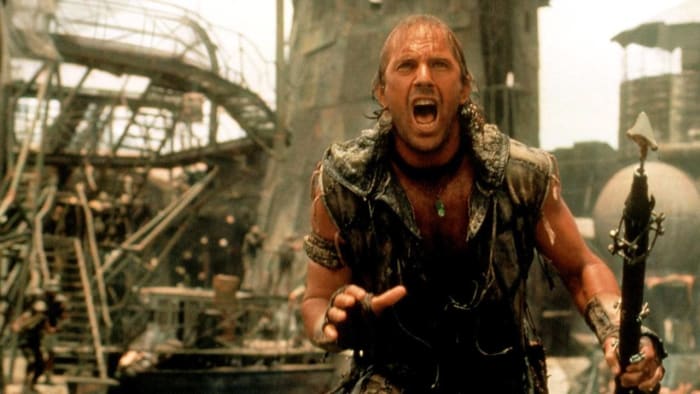
Dubbed “Fishtar” by entertainment journalists prior to its release, Kevin Reynolds’ post-apocalyptic action flick was yet another reminder that shooting on the ocean is an invitation to budget and schedule overruns. On the practical side, storms rocked Hawaii, causing the massive atoll set to sink. Creatively, the production was plagued by disagreements between Reynolds and his ultra-powerful star Costner, who ordered rewrites from Joss Whedon (the scribe described his time on the set “seven weeks of hell”). As the shoot dragged on, the budget exploded from $100 million to $175 million. Though Reynolds received directing credit, Costner finished the movie. The film grossed just shy of $100 million domestically, but it spawned a Universal Studios stunt show that’s still wildly popular to this day.
"Roar"

Tippi Hedren and her husband Noel Marshall channeled their wildlife advocacy into one of the most mind-bogglingly dangerous movies you’ll ever see. Shot on a patch of land in Los Angeles’ Soledad Canyon, the film stars Hedren and her family (including daughter Melanie Griffith) cavorting with hundreds of lions and tigers in what is ostensibly a family drama but, in all actuality, was a real life nightmare. The big cats roam free and romp play with the cast, and at one point, a lion pins Griffith to the floor as the young actress screams for her mother to help her. Behind the camera was no party either. Hundreds of people were injured. Cinematographer Jan de Bont (who’d go on to direct “Speed” and “Twister”) required 220 stitches after he was scalped by one of the lions. Griffith nearly lost an eye after one particularly nasty attack. The film took five years to complete and was a box office bomb upon release in 1981. It has since become a cult classic.
"The Twilight Zone: The Movie"
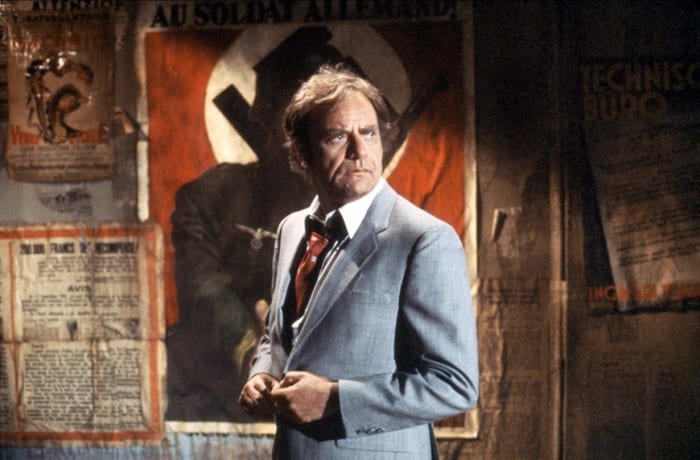
The film industry was rocked on June 23, 1982, when Vic Morrow, Myca Dinh Le and Renee Shin-Yi Chen were killed on the set of “Twilight Zone: The Movie” when pyrotechnics caused a low-flying helicopter to crash land on top of them. Morrow and Le were decapitated by a rotor blade, while Chen was crushed by a strut. The director of the sequence, John Landis, and several crewmembers stood trial for manslaughter but were ultimately acquitted. If you ever watch 1960s and ‘70s action films and wonder what ever happened to that era of wild stunt work, this is what happened.
"The Conqueror"

Quite possibly the deadliest film ever made, this Genghis Khan biopic was shot in St. George, Utah, downwind of a Department of Energy site in Nevada where above-ground nuclear testing was being conducted. By 1980, 91 of the 220 cast and crew members had contracted cancer, and 46 had died, Agnes Moorehead, Pedro Armendáriz, Susan Hayward and John Wayne. While the extent to which the testing caused these ailments is unclear, some experts believe the correlation is hard to deny. Not to trivialize this tragedy, but the Howard Hughes-produced epic is considered the nadir of Wayne’s career and one of the worst films ever made.
"The Wizard of Oz"
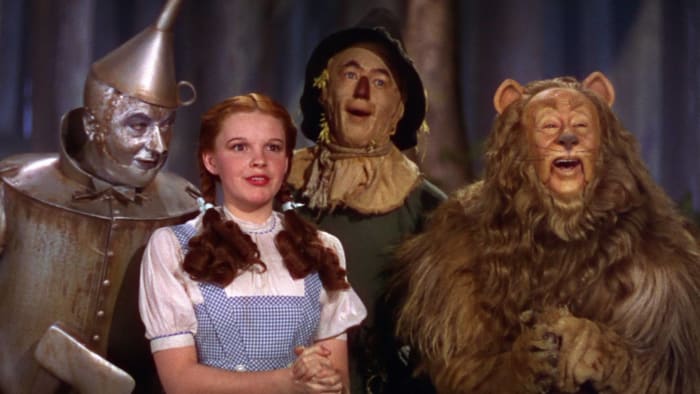
One of the most beloved films of all time was a disaster in the making back in 1938. The project’s first director, Richard Thorpe, shot for two weeks, during which the original Tin Man, Buddy Ebsen, suffered an allergic reaction to his makeup that landed him in the hospital. Victor Fleming took over for Thorpe, and Jack Haley stepped in for Ebsen. Ray Bolger’s Scarecrow makeup was so caustic that it left permanent lines around his mouth and chin. Margaret Hamilton, The Wicked Witch of the West, was burned severely when pyrotechnics during her departure from Munchkinland malfunctioned. Asbestos was used liberally on set. Near the end of the shoot, Fleming was replaced by King Vidor when the former was reassigned to another difficult production called “Gone with the Wind." So keep this in mind the next time you take a trip down the Yellow Brick Road.
"Cruising"

Ever tried to make a movie while protestors are doing everything to make your location shooting unusable? William Friedkin had to pull this off while filming his controversial cop thriller, “Cruising," in which Al Pacino plays a New York City detective trying to catch a serial killer targeting gay men. The screenplay was based on the work of Village Voice journalist Arthur Bell, but the writer recoiled at the script’s treatment of the gay club scene in Manhattan. As a result, he urged the gay rights community to protest the production wherever it shot, which included blowing air horns and training light off mirrors to mess up the lighting. Their efforts worked. The location audio was largely scrapped in favor of overdubbing. The film has a cult following but is still widely derided by the LGBTQ community.
"The Man Who Killed Don Quixote"

That rare occasion when a film’s behind-the-scenes documentary predates the making of the actual movie by nearly two decades, Terry Gilliam’s “The Man Who Killed Don Quixote” is far more interesting for what it took to get to the screen than what wound up on it. Released in 2002, “Lost in La Mancha” details Gilliam’s ill-fated attempt to shoot the film two years earlier in a desert region of Spain with stars Johnny Depp, Jean Rochefort and Vanessa Paradis. The production went awry on Day 1 when it was realized that the location was adjacent to a NATO aircraft testing facility. The following day a flash flood wiped out the location, which damaged equipment and necessitated a full reshoot. A few days later, Rochefort herniated a disc in his back, thus killing the project until Gilliam could scrape together financing 15 years later to shoot it with Adam Driver and Jonathan Pryce. Alas, the finished product is far less interesting than the failed attempt to make it in the first place.
"Super Mario Bros."

Roland Joffé tried to one-up his filmmaking career by expanding from the socially conscious realm of “The Killing Fields” and “The Mission” into producing family-friendly blockbusters with this live-action adaptation of the beloved NES game. He aimed high. Harold Ramis and Danny DeVito were approached to direct. Arnold Schwarzenegger was offered the role of Bowser. “Rain Man” screenwriter Barry Morrow took a first pass at the script. Ultimately, Joffé settled on “Max Headroom” directors Annabel Jankel and Rocky Morton, who inherited an incoherent, massively rewritten screenplay and a couple of unhappy stars in Dennis Hopper and Bob Hoskins. Hopper was particularly abrasive; in one instance, he berated the directors for a full day — including over lunch — about new dialogue until, at last, agreeing to say the lines as written. The result was a Frankenstein’s monster of half-baked ideas that bore little resemblance to the game. It bombed horribly in the summer of 1993.
Jeremy Smith is a freelance entertainment writer and the author of "George Clooney: Anatomy of an Actor". His second book, "When It Was Cool", is due out in 2021.
More must-reads:
Trending in Entertainment
Customize Your Newsletter
 +
+
Get the latest news and rumors, customized to your favorite sports and teams. Emailed daily. Always free!
Use of this website (including any and all parts and
components) constitutes your acceptance of these
Terms of Service and Privacy Policy.

